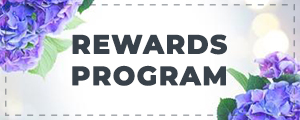| Perovskia atriplicifolia 'Little Spire' | USDA Zone: 4-10 |
Little Spire Russian Sage features delicate spikes of lavender flowers rising above the foliage from early summer to mid fall. The flowers are excellent for cutting. Its attractive tiny fragrant narrow leaves emerge silver in spring, turning grayish green in colour throughout the season.
Little Spire Russian Sage is recommended for the following landscape applications;
- Mass Planting
- Border Edging
- General Garden Use
- Container Planting
Bloomtime: Summer, Early Fall, Mid Fall
Attracts Hummingbirds
Common Name: Russian Sage
|
Key Feature
|
Light Needs | Landscape Uses |
 |
 |
|
|
|
|
| More About Little Spire Russian Sage |
| Height: 2 ft |
Spread: 2+ ft |
Flower Colour: Purple / Blue Shades |
|
Little Spire Russian Sage should only be grown in full sunlight. It prefers dry to average moisture levels with very well-drained soil, and will often die in standing water. It is considered to be drought-tolerant, and thus makes an ideal choice for a low-water garden or xeriscape application. It is not particular as to soil type, but has a definite preference for alkaline soils. It is highly tolerant of urban pollution and will even thrive in inner city environments. Each stem is topped with large, fluffy textured, lavender blue flowers beginning in midsummer. Like most Perovskias, the colorful calyxes remain on the stems long after the flowers are spent, making it look like it is still blooming long after it is actually done. You’ll have great color on this plant from about July through October. Little Spire Russian Sage is a fine choice for the garden, but it is also a good selection for planting in outdoor pots and containers. With its upright habit of growth, it is best suited for use as a 'thriller' in the 'spiller-thriller-filler' container combination; plant it near the center of the pot, surrounded by smaller plants and those that spill over the edges. Note that when grown in a container, it may not perform exactly as indicated on the tag - this is to be expected. Also note that when growing plants in outdoor containers and baskets, they may require more frequent waterings than they would in the yard or garden. Be aware that in our climate, most plants cannot be expected to survive the winter if left in containers outdoors, and this plant is no exception. NOTE: Some flowers and plants may be harmful or poisonous to people or pets if touched or ingested. If you require more information before placing an order, please let us know in advance. |











